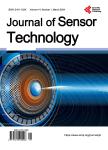Optimization of DNA Staining Technology for Development of Autonomous Microbe Sensor for Injection Seawater Systems
Optimization of DNA Staining Technology for Development of Autonomous Microbe Sensor for Injection Seawater Systems作者机构:Saudi Arabian Oil Company (Saudi Aramco) Dhahran Saudi Arabia Danish Technological Institute (DTI) Aarhus Denmark
出 版 物:《Journal of Sensor Technology》 (传感技术(英文))
年 卷 期:2016年第6卷第3期
页 面:27-45页
学科分类:08[工学] 080502[工学-材料学] 0805[工学-材料科学与工程(可授工学、理学学位)]
主 题:DNA Staining Fluorescence Detection Automated Monitoring Real-Time Detection Microbial Sensor Prototype Injection Water
摘 要:Microbial activity in the water injection system in oil and gas industry leads to an array of challenges, including biofouling, injectivity loss, reservoir plugging, and microbiologically influenced corrosion (MIC). An effective mitigation strategy requires online and real-time monitoring of microbial activity and growth in the system so that the operators can apply and adjust counter-measures quickly and properly. The previous study [1] identified DNA staining technology-with PicoGreen and SYBR Green dyes—as a very promising method for automated, online determination of microbial cell abundance in the vast Saudi Aramco injection seawater systems. This study evaluated DNA staining technology on detection limit, automation potential, and temperature stability for the construction of automated sensor prototype. DNA staining with SYBR Green dye was determined to be better suited for online and real-time monitoring of microbial activity in the Saudi Aramco seawater systems. SYBR Green staining does not require sample pre-treatment, and the fluorescence signal intensity is more stable at elevated temperatures up to 30℃. The lower detection limit of 2 × 103/ml was achieved under the optimized conditions, which is sufficient to detect microbial numbers in Saudi Aramco injection seawater. Finally, the requirements for design and construction of SYBR-based automated sensor prototype were determined.



